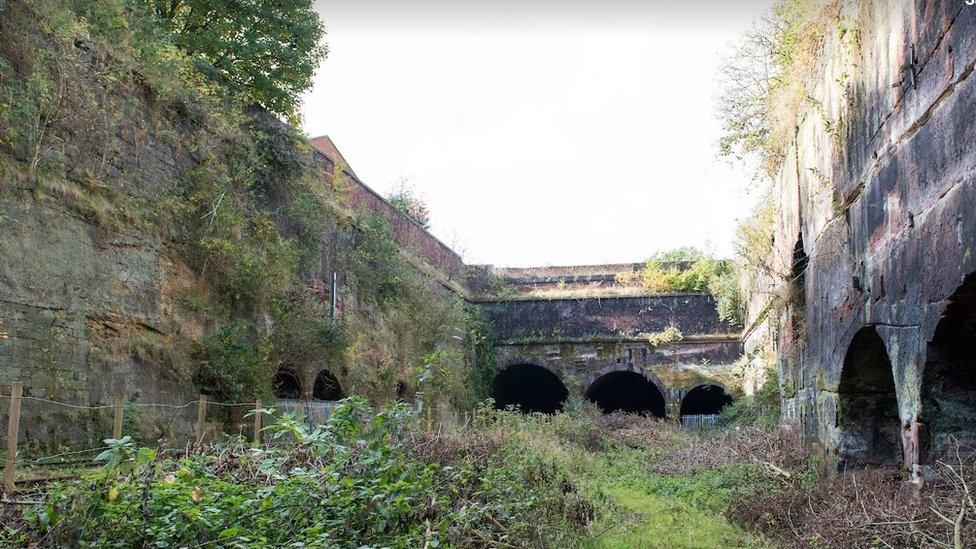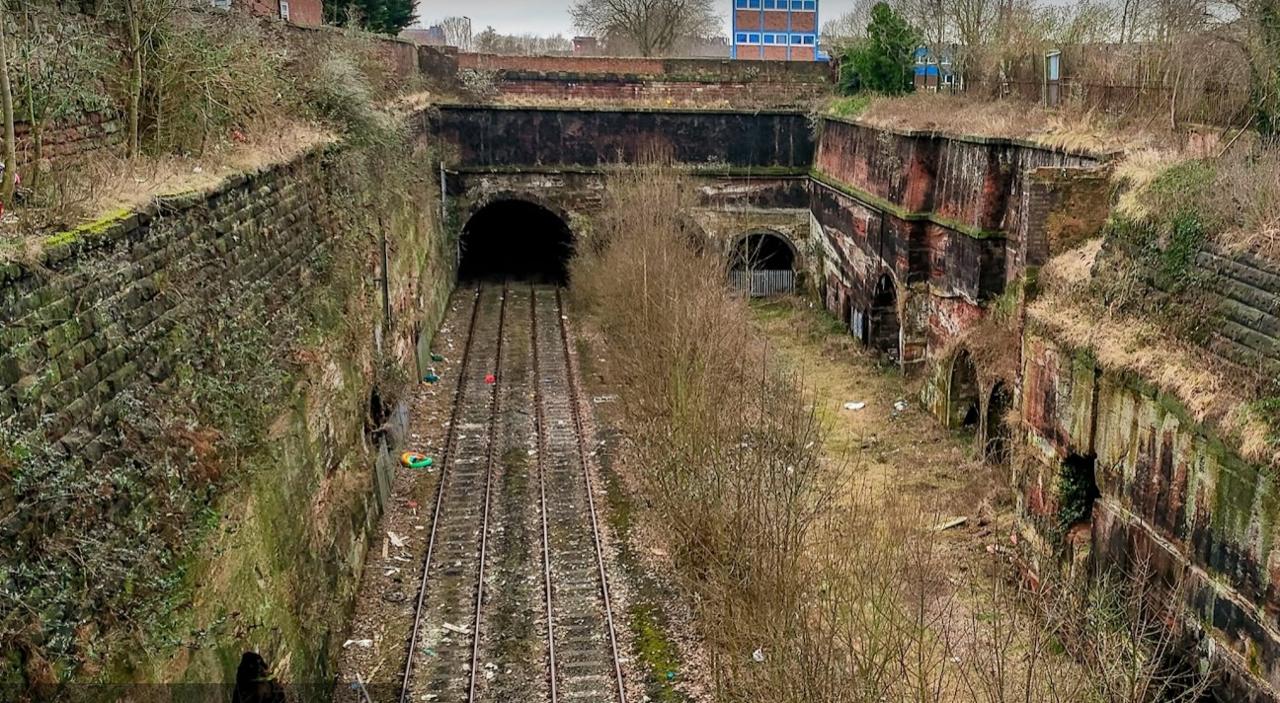Liverpool Edge Hill: Historic railway site gains heritage protection
- Published

Edge Hill opened in 1830 as the first locomotive terminus
What is said to be the cradle of railway travel has been earmarked as a nationally important archaeological site after a long campaign.
The government recognition for Edge Hill Engine Station in Liverpool crowns 40 years of work by volunteers.
Opening in 1830 as the first locomotive terminus, it was a key moment in the development of mainline railways.
Its selection as a protected site was based on a recommendation made by Historic England.
Edge Hill was where steam locomotives were detached from trains arriving from Manchester, with ropes hauling passenger carriages up inclines to the Crown Street passenger terminus and lowering goods down to the docks at Wapping.
The rarity of the surviving remains of the rope-winding arrangement for the Wapping and Crown Street inclines adds to the location's national significance.
The opening of the Liverpool and Manchester Railway on 15 September 1830, engineered by George Stephenson, is regarded by many as the birth of the modern mainline railways.
Archaeologist Paul Rees said: "When our group - members of the Merseyside Industrial Heritage Society and colleagues from Liverpool museums - cleared rubble and rubbish from the Edge Hill cutting in the late 1970s, we were so pleased to identify the various trenches through which the rope haulage system operated.
"Having deposited our surveys and photographs at the museum, we felt we had completed our work. Now, over 40 years later, it is so pleasing to find our work has also been an impetus for the site being awarded national protection."

Volunteers have been exploring the Edge Hill site for the past 40 years
Historic England said the quality of the evidence about Edge Hill's archaeological significance which had been gathered by rail enthusiasts was key to the designation granted to it by the Department for Digital, Culture, Media and Sport.
The application which has now led to the site's addition to the National Heritage List for England as a scheduled monument was first made in 2018 by the Liverpool and Manchester Railway Trust, which collated 19th Century documents and produced an analysis of the archaeological excavations in the 1970s.
Eric Shenton, chairman of the trust, said the news had brought everyone involved "great joy".
"For over 40 years, we've wanted to see the site given the recognition it deserves as the starting place of the world's first inter-urban railway," he said.
"We would now like to see work undertaken to clear damaging vegetation and for the station site to be included in plans for the celebration of the 200th anniversary of the opening of the railway in 2030, including some provision for visitor access to the site."
Eric Branse-Instone, Historic England's listing adviser, said protecting the site had only been possible "through the painstaking research and tenacity of the Liverpool and Manchester Railway Trust, railway historians and archaeologists, who've worked together to provide the evidence we needed to make this recommendation. I'm thrilled for everyone involved."

Enthusiasts hope more excavations can take place to mark the station's 200th anniversary in 2030

Why not follow BBC North West on Facebook, external, Twitter, external and Instagram, external? You can also send story ideas to northwest.newsonline@bbc.co.uk, external